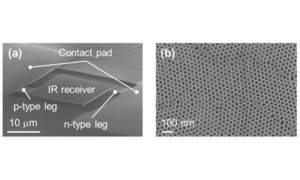The next big thing we should expect is the CO2, and it has some positive and negative impacts.
The rising demand for consumer products and increasing urbanisation are the key factors in fueling the growth of the market, especially in the developing nations and what doesn’t matter which the markets are. So, when it comes to HVAC industry, the impact of cooling technologies such as refrigeration and air conditioning on the environment is of two folds; one is indirect emissions. This is very specifically energy related. This is more towards installation of equipment which has been contributing towards the CO2 emissions or reducing global energy resources. There’s a huge amount of focus towards the indirect emission happening towards sustainability.
The next big pie is on the direct emission, and this is where exactly the refrigerant specifics is going to come in. It could be of certain leakages because of the refrigerant during manufacturing, while maintaining the system out there, improper disposal or the challenges what we have while we are reclaiming the refrigerant from our equipment in refrigeration conditions. Going by some facts, the data emissions are estimated to grow by about 10 percentage of absolute CO2 emissions, which is currently up to 15 percent.
The market reports indicate reduction in the next decade, and refrigerant emissions needs to go hand in hand because we can’t simply work towards the system side; we need to be capital enough in terms of providing alternate solutions from the refrigerant side and reduce energy related emissions. This can be done by adopting new technologies or bringing some energy efficient components, which we are currently using in the systems out there.
The industry has come a really long way by transforming itself from CFCs, HFCs and others. And the last couple of years we have been largely into HFCs and other refrigerants which gave us opportunity in terms of reducing options, where we really don’t come to make any changes in the equipment, rather we could get the same efficiency, but with lower GWP. So, Trane Technologies made a huge shift, whether it is on the transport side of the business or commercial side or the residential side; we have finely transformed from HCFCs.
But now, several concerns have been raised predominantly on the GWP, especially the global warming and other environmental issues which are really pushing us very hard to get into this natural refrigeration. Otherwise, the big goals what we have in place in terms of meeting our sustainability targets, can’t be achieved.
Companies like Trane Technologies have been making huge investments towards R&D for automated refrigerants, natural refrigerants to see how well can we adapt those things. When we talk about natural refrigeration, the most common alternative that comes to our mind is ammonia, as we have been seeing it for quite some time now.
But the next big thing we should expect is the CO2, and it has some positive and negative impacts. CO2 is one of the good choices, but we also have hydrocarbons as another prominent refrigerant. Whether you name it as ISO butane ISO propane, they deliver promising advantages. Some of the important factors are the ozone depletion potential, as is definitely bring the blockages, advantages to the low- GWP; when it comes to compliance and regulations in developed markets like Europe and US, getting into these specific regions, hydrocarbons do position us very well from industry standpoint. You don’t have to reclaim the refrigerant; you can simply blow it out of the mix with things like natural refrigerants. So, it is keeping us in a bell position.
Secondly, safety has always been a major concern. In fact, currently, many of our efforts, especially towards the R&D side are more about how well are we implementing the safety standards to handle these natural refrigerants. Apart from safety, efficiency is another thing which is going to be a real challenge. But it is really pushing as hard not to use copper, as we all know that from a heat of sheer application stop resolve the best material from an intellectual standpoint. But for CO2, you really cannot use copper, and which is why we are losing out on efficiency.
The biggest question here is, what could be the alternate materials that can be considered to ensure efficiency, while maintaining importance of natural refrigerants. We have been consistently evaluating the HVAC applications in the industry there. Natural refrigerants don’t just reduce the emission control, they can also be highly energy- efficient. If we could address the direct emission control issues then we can surely address the indirect emissions too. For example, propane which is getting more and more popular into plug in the drop refrigeration units. In fact, we were doing a couple of tests where we found some encouraging responses in terms of efficiency. About 10 to 15 percent of energy-efficiency numbers we have been seeing by getting into some of hydrocarbons and by implementing some design changes.
Observations towards ammonia
Ammonia as a refrigerant is getting popular in countries like India. Its popularity is increasing especially towards the comfort cooling applications is especially due to its low-GWP, the larger limitations is higher flammability and the toxicity.
Trane Technologies, are largely into the business of chillers and these are really big chillers. Whether it is an air-cooled or water-cooled chiller, the systems demand for a lot of charges, like the refrigerant charges. if you look at the residential applications, we may be talking about buying 2-3 pounds of charge, but when it comes to chillers applications, there the demand or volume of the charge is going to be significantly higher. And, in dense population of urban environments, the risk of using ammonia remains to be a challenge, as its volume cannot be allowed by the local regulations per say in the developed market.
So, these are some of the challenges we continue to have in the industry and we have been very active in terms of looking for ways to address these challenges. Many of the industries especially in our country, they have been using it. Well out of three i.e. ammonia, hydrocarbons and CO2; obviously hydrocarbons give us very promising insights. The isobutane combine has been largely used in small portable refrigeration and air conditioning products primarily because of the efficiency. The only challenge is more about the high combustibility factor we have, and the safety concerns, which is restricting.
There used to be multi-circuit products and other things. But it is very popular in water coolers, small package cases, wherever the charge and more despite less CO2. Again, we all know that the efficiency is continuing to becoming a challenge, it’s getting very low and obviously, the operating pressure is also significantly high. So, that is really pushing hard in terms of using the right equipment, which could able to withstand such a high pressure. But this is a good choice, we have been seeing that this has been getting adapted against our 404 application just because it’s lower efficiency impacts can be to some extent can be mitigated by advanced thermodynamic cycles. That’s where we are kind of doing some choices to overcome some of the low efficiency.
We also have the cascading systems to refrigeration systems and CDs are getting widely especially in hot, cold climates in places like Chennai. These things are getting popular out there. To summarise, increased product fragmentation is happening while we continue in the HVAC market with multiple refrigerants used to serve the cooling needs from smaller capacity to the largest capacity.
Final note
There are a few important to remember for efficient refrigeration; one is the balance of efficiency, safety, environmental impact, combined with the total cost of ownership. It is going to be the deciding factor, especially in our country. At the end of the day, your refrigerant and systems solution for different applications could be very different and probably the industry might go towards that dimension is what we are thinking as industry there.
Cookie Consent
We use cookies to personalize your experience. By continuing to visit this website you agree to our Terms & Conditions, Privacy Policy and Cookie Policy.















